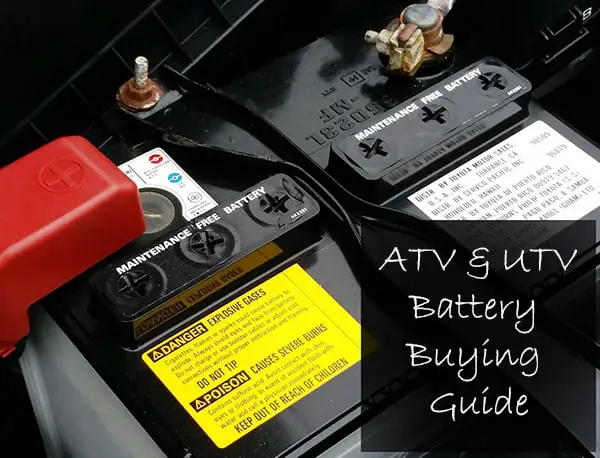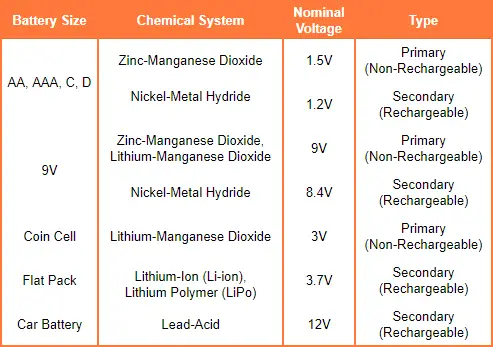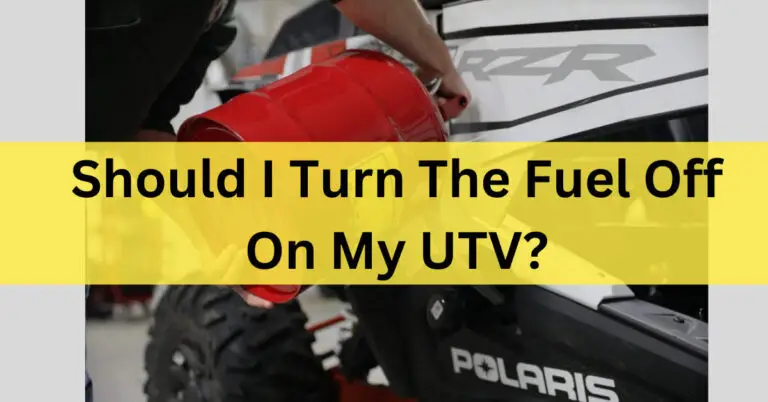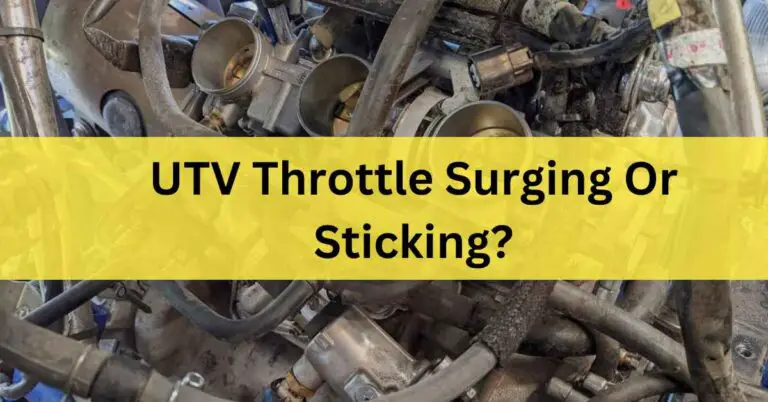Can I Use An Automotive Battery In My UTV? Choose best In 2023
Power-hungry features and accessories on modern UTVs can take more power than the battery’s capacity. One of the most popular questions asked for boosting battery capacity is, can I use an automotive battery in my UTV?
Although it is possible to utilize an automotive battery on a UTV if wired properly, providing the same voltage, this may not be a perfect and professional solution for everyone.
In this post, I have covered the benefits, drawbacks, and other information you should be aware of if you’re considering using an automotive battery on your UTV.
Differences Between An Automotive Battery and a UTV Battery:
Automotive and UTV batteries differ in size, shape, design, and performance, affecting their reliability and durability.
- UTV batteries are smaller and more compact than automotive batteries to fit into the limited space available in the UTV battery compartment.
- UTV batteries have a more robust design and construction to withstand the harsh terrain, vibrations, and impacts that UTVs encounter. They are also sealed to prevent water and moisture from entering the battery during river crossings or wet weather conditions, which automotive batteries cannot handle.
- UTV batteries are capable of deep and quick discharging and recharging cycles, which are necessary for prolonged use of UTVs without access to an electrical outlet. Automotive batteries are not designed for this type of use and may not last as long in a UTV.

Both types of batteries may have some similarities, but it is essential to use the appropriate type of battery for the intended application to ensure optimal performance, longevity, and safety.
Upsides And Downsides Of Using An Automotive Battery:
Using an automotive battery in your UTV has both technical advantages and disadvantages that can affect the battery’s performance, reliability, and longevity.
Upsides Of Using An Automotive Battery:
1. High Cranking Power:
Automotive batteries are designed to provide high-cranking power to start larger engines, which may be an advantage in UTVs with high-performance engines.
2. Longer Lifespan:
Automotive batteries have a longer lifespan than UTV batteries because they are designed to handle more deep discharging and recharging cycles.
3. Availability:
Automotive batteries are widely available and can be purchased at most auto parts stores, making it easier to replace a battery when necessary.
Downsides Of Using an Automotive Battery:
1. Limited Performance:
An automotive battery may not be able to handle the frequent discharging and recharging required by a UTV’s electronics and engine. Your UTV’s performance and dependability can suffer as a result

2. Risk of Damage:
UTVs are designed to handle rough terrains, which can result in much jostling and vibration. An automotive battery may not be able to withstand constant shaking, which could cause damage to the battery and its components.
3. Overcharging:
Automotive batteries have a higher charging voltage, which can overcharge and damage the UTV’s electrical system, including the battery, alternator, and other components.
4. Weight:
Automotive batteries are heavier than UTV batteries, which can affect the UTV’s handling and performance, especially if the UTV is used for racing or other high-performance applications.
5. Temperature Tolerance:
UTV batteries are designed to handle extreme hot and cold temperatures, which may not be the case for automotive batteries. Using an automotive battery in extreme temperatures can reduce its performance and lifespan.
6. Vibration And Impact:
Automotive batteries are not designed to handle the rough terrain, vibration, and impact that UTVs encounter, these circumstances can lead to premature failure of the automotive battery.
7. Water Resistance:
Automotive batteries are not sealed, so they are susceptible to water and moisture damage during river crossings or wet weather conditions.
8. Warranty:
An automotive battery used in a UTV may void its warranty, leaving the user responsible for any repairs or replacements needed.
What is the Best Battery for Your UTV?
To run smoothly and efficiently, choosing the right battery is essential for your UTV. Following are the types of batteries mostly used on UTVs:
Types of UTV Batteries:
There are two main types of UTV batteries:
- Lead-acid
- lithium-ion batteries.
1. Lead-Acid Batteries:
These are the most prevalent kind of UTV batteries. They have been used for a long period in many applications, are reasonably priced, and are trustworthy..
Conventional lead-acid batteries are the most affordable option, but they require regular maintenance, such as checking the water levels and charging them correctly.
2. Lithium-Ion Batteries:
The newest and most technologically sophisticated form of battery is lithium-ion. They are strong, portable, and have a protracted lifespan.
Moreover, they cost more than lead-acid batteries. Lithium-ion batteries are a good choice if you need a lightweight and powerful battery that can handle high-demand applications.
However, they are not necessary for all UTV owners and are generally best suited for professionals or racers.
How to Choose The Best UTV Battery:
When choosing a UTV battery, you need to consider several factors, including:
1. Battery Size:
Make sure you choose a battery that fits your UTV’s battery compartment. The battery size is measured in Group size, which refers to the battery’s height, length, and width.
2. Voltage:
The voltage of your UTVs battery must match the voltage of the UTV’s electrical system. Most UTVs have a 12-volt system.
3. Amperage:
The amperage rating refers to the battery’s power output. The higher the rating, the more powerful the battery is.
4. Cold Cranking Amps (CCA):
CCA refers to the battery’s ability to start the engine in cold weather. UTVs used in cold weather require a battery with a high CCA rating.
5. Durability:
UTVs are used in rough terrains and harsh conditions, so the battery must be durable and withstand vibration and impact.
What Are the Alternatives other than Installing an Automotive Battery?
There are also several other options for upgrading a UTV’s battery and electrical system, including:
1. Upgrade The Stock Battery:
If the UTV’s stock battery is not providing enough power, it may be possible to upgrade to a higher-capacity battery with more amperage output.
This can provide more consistent power to the vehicle’s electrical system and improve overall performance.
2. Install A Second ATV Battery:
Some UTVs may have the option to install a second battery to provide more power to the vehicle’s electrical system.
This can be a good option for UTVs that require a lot of power, such as those used for winching or running multiple accessories.
3. Upgrade to A High-Output Stator:
The stator is part of the UTV’s electrical system that generates power to charge the battery and run the vehicle’s accessories.
Upgrading to a high-output stator can provide more power to the electrical system, improving performance and reducing the risk of electrical malfunctions.
This is the best guide, but it is always recommended to consult a professional mechanic to determine the best options for your specific UTV model.
Frequently Asked Questions:
1. What Type Of Battery Should I Use In My UTV?
Several types of batteries are available for UTVs, including AGM, gel, and lithium-ion batteries. Each type has its advantages and disadvantages, so choosing the right one for your specific needs is important.
2. How Do I Know If An Automotive Battery Is Compatible With My UTV?
To determine if an automotive battery is compatible with your UTV, you’ll need to check the specifications of your UTV and the battery to ensure that they match.
3. What Should I Do If My UTV Battery Dies While I’m Out Riding?
If your UTV battery dies while you’re out riding, you can try jump-starting it with another vehicle or a portable battery pack.
If this doesn’t work, you may need to tow your UTV back to your starting point or a repair shop. Always carry a spare battery or a portable battery pack with you on your rides to avoid this situation.
Final Thoughts:
Installing a car battery in a UTV can potentially cause damage to the vehicle’s electrical system, posing a safety risk and potentially resulting in costly repairs.
Instead, it is important to use a battery specifically designed for use in a UTV that matches the electrical specifications of the vehicle.
There could be other options for upgrading a UTV’s battery and electrical system like stock battery upgrade, Installing a second battery or upgrading to a high-output stator.
The finest solutions for your particular UTV model should be determined after consulting a qualified mechanic.
Similar Post:







